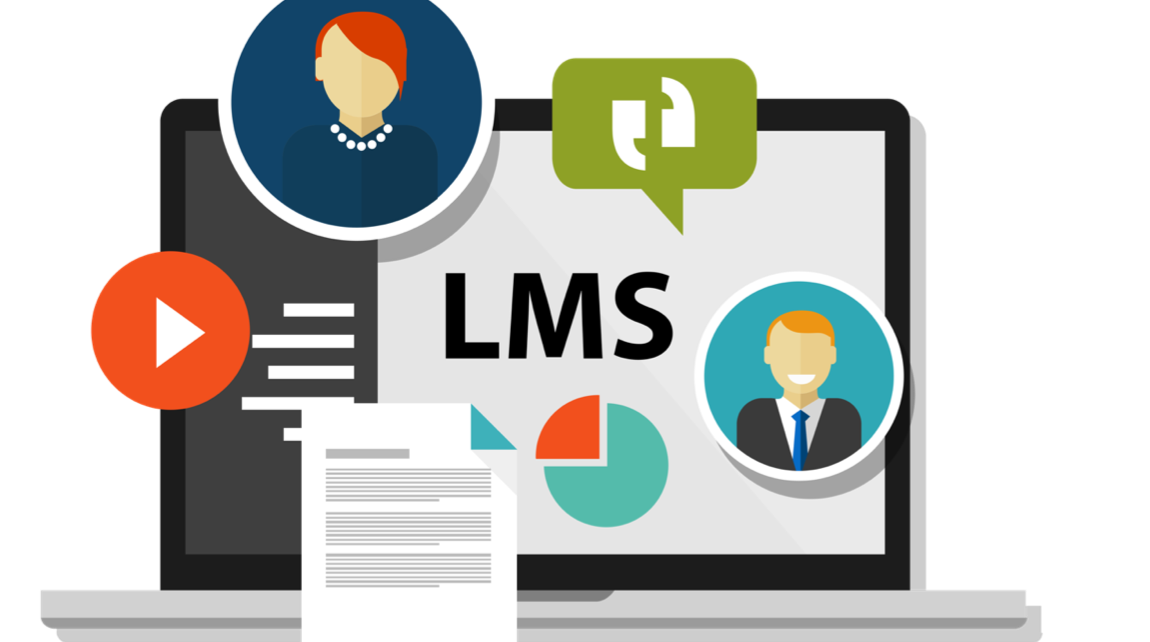
In the modern corporate landscape, organizations are under constant pressure to enhance workforce skills and drive continuous learning. Investing in effective corporate training is no longer optional it’s a strategic necessity. Learning Management Systems (LMS) have become essential tools in delivering, managing, and optimizing these training initiatives.
An LMS streamlines the entire training process, making it easier to deploy learning programs, track employee progress, and measure results. This not only improves engagement but also supports long-term business performance and growth.
In this guide, we’ll explore the top LMS platforms for corporate training, highlighting their core features, key benefits, and how they can support your organization’s learning goals.
Key Takeaways
- Understanding the role of eLeaP LMS in corporate training
- Identifying key features of effective learning management solutions
- Exploring the benefits of implementing an LMS for corporate training
- Reviewing top LMS options for companies
- Evaluating the strategic value of LMS for business growth
The Strategic Value of LMS for Corporate Training
Learning Management Systems are changing how companies train their teams. They make learning easier, faster, and trackable. This is key in today’s fast-paced business world, where keeping up with new skills is essential.
How LMS Platforms Transform Employee Development
LMS platforms let employees learn at their own speed. This personalized approach boosts engagement and keeps employees happy. It helps the company grow too.
Measuring Training ROI with Learning Management Tools
LMS is great for seeing how well training works. It tracks who finishes courses, how well they do, and what they think. This helps companies see if their training is worth it, guiding future plans.
Key Features to Look for in Learning Management Solutions
When picking a learning management solution, look for key features that matter. A good LMS should offer a solid platform for training. It should also make learning fun, easy to manage, and provide useful data.
User Experience and Interface Design
A great user interface is key. It lets learners find and use training content easily. A simple design boosts engagement and improves learning results.
Content Creation and Curation Capabilities
Being able to make and manage quality content is vital. Look for tools to create, organize, and add external content. These help customize training for your team’s needs.
Analytics, Reporting, and Compliance Tracking
Analytics and reports are crucial. They help see how well training works and if it meets rules. A good LMS gives detailed insights and tools for tracking and reporting.
Top Learning Management Systems for Enterprise Training
Learning Management Systems have evolved, making enterprise training more advanced. These systems meet various training needs of organizations. They offer features that boost employee growth and ensure compliance.
Cornerstone OnDemand
Overview
Cornerstone OnDemand is a top Learning Management System for corporate training. It focuses on the user, providing personalized learning experiences.
Pros
It has advanced analytics and AI-driven learning suggestions. It also has a mobile app for learning on the go. Its scalability is great for big companies.
Cons
Some find the interface too complex. The cost might be too high for smaller businesses.
Features
Cornerstone OnDemand has tools for creating content, compliance training, and managing performance. It also integrates well with HR systems.
SAP Litmos
Overview
SAP Litmos is a cloud-based LMS known for its ease of use. It’s perfect for companies seeking a simple, intuitive platform.
Pros
It has a user-friendly interface, customizable courses, and detailed reporting. Its mobile compatibility is a big plus.
Cons
It’s great for basic training but lacks advanced features compared to others.
Features
SAP Litmos offers tools for creating courses, assessments, and integrating with third-party apps.
Docebo
Overview
Docebo is an AI-powered LMS that focuses on personalized learning. It supports complex training needs and large user bases.
Pros
Its AI-driven suggestions improve learner engagement. It’s scalable and offers advanced analytics and reporting.
Cons
Its complexity might deter some users. The cost is higher than some competitors.
Features
Docebo includes social learning, gamification, and wide integrations with HR and business systems.
eLeaP MS
Overview
eLeaP LMS is a versatile and user-friendly learning management system designed to meet a variety of training needs. Known for its simplicity and flexibility, eLeaP makes it easy for organizations to deliver, manage, and track effective training programs across teams of all sizes.
Pros
It’s intuitive, offers many course creation tools, and supports different content formats.
Cons
Some users find its reporting and customization options limited.
Features
TalentLMS has tools for creating courses, compliance training, and basic reporting. It’s also known for its customer support.
Adobe Learning Manager
Overview
Adobe Learning Manager, formerly Adobe Captivate Prime, is a comprehensive LMS. It integrates well with other Adobe tools. It’s designed for modern, mobile learners.
Pros
It has a sleek interface, AI-driven learning suggestions, and seamless Adobe integration.
Cons
Some find the pricing high. Its reporting features are limited compared to competitors.
Features
Adobe Learning Manager offers personalized learning paths, mobile learning, and Adobe Creative Cloud integration.
Selecting the Right Learning Management Solution for Your Company
Finding the right LMS is key to meeting your training goals, but pairing it with the right resources can make all the difference. That’s where All You Can Books comes in. With access to over 200,000 audiobooks, ebooks, language learning courses, and more, All You Can Books offers an expansive digital library perfect for supplementing any learning management system. Whether you’re enhancing employee training with relevant audiobooks or supporting language development through structured courses, integrating All You Can Books into your training strategy helps ensure a more engaging and flexible learning experienc
Assessing Your Organization’s Training Needs
Knowing what training your company needs is the first step. This means figuring out the types of training, how many users, and what you want to achieve.
Budget Considerations and Pricing Models
Money matters a lot when picking an LMS. Think about the upfront cost and the ongoing costs. Look at subscription fees, per-user costs, and any extra fees for setup and upkeep.
Integration with Existing HR and IT Systems
The LMS you choose must work well with your current HR and IT systems. This ensures everything runs smoothly and avoids any hiccups.
It should be compatible with systems like HRIS, CRM, and other tools your company uses.
Implementation Best Practices for Learning Management Platforms
To get the most out of a Learning Management System, organizations need to focus on good implementation strategies. A successful rollout requires careful planning, execution, and ongoing support. This ensures the system meets the training needs of the organization.
Phased Rollout Strategies
A phased rollout strategy is a smart way to introduce the LMS. It starts with a small pilot group. This method helps spot issues early, reduces disruption, and allows for adjustments before the full launch.
Content Migration and Development
Effective content migration and development are key for a successful LMS rollout. Organizations should review their current content, move relevant materials, and create new content that fits their training goals.
User Adoption and Engagement Tactics
User adoption is vital for an LMS’s success. To encourage user participation, organizations should offer training sessions, incentives, and ongoing support. This helps maximize the system’s benefits.
Conclusion
Effective corporate training is key for any organization’s growth and success. Learning management solutions are vital for improving employee skills and measuring training success.
Choosing the right learning management system (LMS) is important. Companies need to think about their training needs, budget, and current systems. Top LMS platforms like Cornerstone OnDemand and SAP Litmos offer features for different training needs.
Implementing an LMS needs careful planning. This includes a phased rollout, moving content, and getting users to adopt it. With the right LMS, companies can improve training, engage employees better, and boost overall performance.
As corporate training evolves, LMS technology will keep playing a big role. Companies can use LMS to stay ahead, succeed in business, and create a culture of learning and growth.
FAQ
What is a Learning Management System (LMS) and how does it support corporate training?
A Learning Management System (LMS) is software that helps companies manage training. It lets them create, assign, and track employee courses. This ensures employees have the skills they need to do their jobs well.
What are the key benefits of using an LMS for employee development?
Using an LMS improves knowledge retention and boosts employee engagement. It also helps track compliance and measure ROI. Platforms like Cornerstone OnDemand and Docebo offer features like personalized learning and gamification.
How do I choose the right LMS for my organization?
To pick the right LMS, first, figure out your training needs. Then, look at your budget and see if it fits with your HR and IT systems. Compare options like TalentLMS and Cornerstone OnDemand to find the best match for your company.
What features should I look for in an LMS?
When choosing an LMS, look for a user-friendly design and good content creation tools. Also, check for analytics and compliance tracking. Platforms like Docebo offer AI-powered learning and mobile access, which can improve the learning experience.
How can I ensure successful implementation of an LMS?
For a successful LMS implementation, start with a phased rollout. Plan your content migration and development. Use tactics to engage users and monitor feedback to improve.
Can an LMS integrate with our existing HR systems?
Yes, many LMS platforms can integrate with HR systems like HRIS and CRM. Options like Cornerstone OnDemand and SAP Litmos use APIs and standards for seamless data exchange.
How can I measure the effectiveness of my LMS?
To gauge your LMS’s effectiveness, track metrics like course completion and user engagement. Platforms like TalentLMS and Adobe Learning Manager offer analytics to help you make informed decisions.
